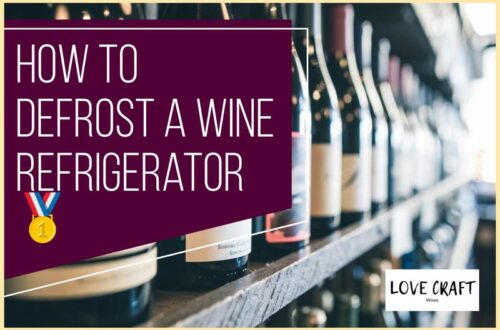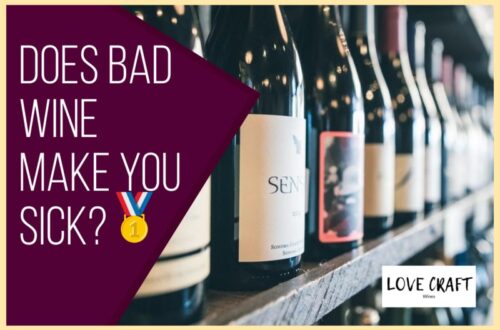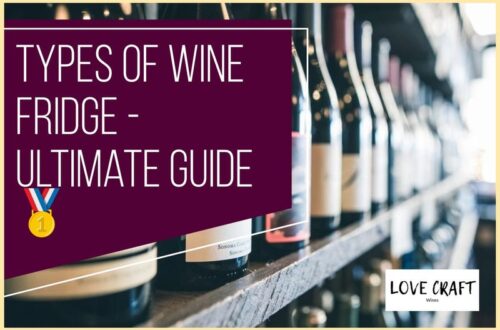Have you ever wondered why some wines taste better after they’ve been aged for several years? The answer lies in the complex chemical and physical reactions that occur within the wine as it matures. Aging wine is a process that involves a delicate balance of time, temperature, and storage conditions.
When done correctly, it can result in a wine that is smoother, more complex, and more enjoyable than its younger counterpart. As you delve into the world of wine aging, it’s important to understand the various factors that contribute to the process.
From the chemical reactions that occur between the wine’s components to the physical changes that take place as it interacts with oxygen, there are many variables at play. By gaining a deeper understanding of these factors, you can learn how to properly store and age wine for optimal results, as well as identify which wines are best suited for aging versus those meant for immediate consumption.
So, let’s explore the science behind wine aging and discover what causes wine to improve with age.
Table of Contents
Chemical Reactions in Wine Aging
As wine matures, chemical reactions occur that transform its flavors and aromas into something more complex and delightful.
One of the primary chemical reactions that takes place during wine aging is oxidation. Oxygen slowly seeps into the wine through the cork, causing changes in the wine’s color, aroma, and flavor.
In red wines, the oxygen reacts with tannins and anthocyanins, which are responsible for the wine’s color, creating new compounds that soften the wine’s tannins and deepen its color.
In white wines, oxidation causes the wine to lose some of its fruitiness, but it also adds complexity by creating new flavors and aromas.
Aside from oxidation effects, tannin reactions also play a significant role in wine aging. Tannins are compounds found in grape skins, seeds, and stems that give wine its astringency or bitterness.
During aging, tannins bind together and form chains, which makes them less astringent and more complex. This process is called polymerization and is responsible for the velvety texture that aged red wines possess.
As tannins bind together, they also react with other compounds in the wine, such as anthocyanins and flavonoids, to create new flavors and aromas.
Overall, these chemical reactions contribute to the wine’s complexity and depth of flavor, making it more enjoyable and desirable as it ages.
As the chemical reactions continue to occur during wine aging, physical changes also take place.
Physical Changes in Wine Aging
You may notice that over time, the liquid inside the bottle becomes darker and thicker, like a slow-moving river that has collected sediment and debris along its journey. This physical change is a result of the oxidation effects that occur during wine aging.
As oxygen seeps into the bottle through the cork, it interacts with the wine and causes it to darken. This is why older red wines are often described as having a brick-red or brownish color, as opposed to the bright, vibrant hues of younger wines.
Another physical change that occurs during wine aging is tannin development. Tannins are naturally occurring compounds found in grapes, and they provide structure and texture to wine. Over time, these tannins become more complex and mellow, resulting in a smoother, more balanced wine.
This is why aged red wines are often described as having a softer mouthfeel, with less astringency and bitterness than their younger counterparts. These physical changes are just one aspect of wine aging, and there are many other factors that influence the process.
Factors that Influence Wine Aging
Take a moment to consider what factors might impact the aging of your favorite bottle of vino, as there are many variables at play that can alter the taste and aroma of the wine over time.
Temperature control is one of the most important factors when it comes to aging wine. The ideal temperature for wine storage is between 50-55°F, as this range allows the wine to age gracefully without any spoilage. Any temperature above 70°F can cause the wine to age too quickly, resulting in a flat and uninteresting flavor. On the other hand, storing wine below 50°F can cause the wine to age too slowly, stunting its development.
Another key factor that influences wine aging is oxygen exposure. When wine is exposed to too much oxygen, it can spoil quickly and lose its flavor. However, when wine is exposed to just the right amount of oxygen over time, it can improve in flavor and aroma. This is why many wine collectors store their bottles on their sides, which allows a small amount of oxygen to seep into the wine over time through the cork. By doing so, they can create a more complex and nuanced flavor profile.
Understanding temperature control and oxygen exposure are just two of the many factors that can impact wine aging.
Next, let’s dive into understanding the difference between wines meant for aging and wines meant for immediate consumption.
Understanding the Difference between Wines Meant for Aging and Wines Meant for Immediate Consumption
Picture yourself sitting down for a meal with a friend, and you’re looking for the perfect bottle of wine to complement your dinner. Understanding the difference between wines meant for immediate consumption and those meant for aging can help you choose the ideal bottle to suit your needs.
Tasting preferences play a significant role in determining the type of wine that’s best for you. If you enjoy bold, fruit-forward flavors, then wines meant for immediate consumption may be the way to go. On the other hand, if you prefer more complex, nuanced flavors, then wines meant for aging may be more your style.
Another factor to consider is wine regions. Some wine regions, like Bordeaux, produce wines that are meant for aging, while others, like Beaujolais, produce wines meant for immediate consumption. Knowing the characteristics of different wine regions can help you make an informed decision when choosing a bottle of wine.
Here are a few things to keep in mind:
- Wines from cooler climates tend to have higher acidity and tannins, which make them better candidates for aging.
- Wines from warmer climates tend to have lower acidity and tannins, which make them better candidates for immediate consumption.
- Red wines generally age better than white wines.
- Wines with higher alcohol content tend to age better than wines with lower alcohol content.
Understanding the differences between wines meant for immediate consumption and those meant for aging can help you make a more informed decision when choosing a bottle of wine. However, once you’ve made your selection, it’s important to know how to properly store and age the wine for optimal results.
How to Properly Store and Age Wine for Optimal Results
Properly storing and aging your wine can enhance its flavors and complexities, resulting in a more enjoyable experience. The first step in wine preservation techniques is to ensure that the temperature and humidity are at the correct levels.
The ideal temperature for aging wine is between 55-65 degrees Fahrenheit, and the humidity should be maintained at around 70%. Keeping the wine at these levels will prevent it from becoming too dry or too damp, which could cause the cork to shrink or mold to form.
Another important factor in wine preservation is keeping the bottles away from light and vibration. Light can cause the wine to age prematurely and develop off-flavors, while vibration can disturb the sediment and ruin the wine’s delicate balance.
It’s best to store the bottles horizontally to keep the cork moist and prevent oxygen from entering the bottle. Additionally, it’s recommended to store the wine in a cool, dark place, such as a wine cellar, to ensure that the wine ages properly and develops its full potential.
With these proper wine preservation techniques, you can enhance the wine’s flavors, aromas, and complexities, resulting in a truly exceptional drinking experience.
Frequently Asked Questions
What is the maximum age that a wine can reach before it goes bad?
Hey there wine enthusiast, you might be wondering what the maximum age a wine can reach before it goes bad.
As an avid wine drinker, you know that wine preservation techniques play a crucial role in keeping your favorite bottle fresh. However, there are several factors affecting wine spoilage, such as oxygen exposure, temperature, and microbial activity.
To prevent spoilage, storing wine in a cool, dark place with a consistent temperature is key. While some wines can age gracefully for decades, others may lose their flavor and aroma after just a few years.
Ultimately, the maximum age a wine can reach before it goes bad depends on the wine’s quality, grape variety, and storage conditions. So, if you’re looking to enjoy a bottle of aged wine, make sure to keep it in optimal conditions and do your research on the wine’s aging potential.
Cheers!
Can any type of wine improve with age, or are there specific varieties that are better suited for aging?
When it comes to aging wine, not all varieties are created equal. While both red and white wines can improve with age, red wines tend to have a higher aging potential due to their higher tannin levels and deeper flavors.
However, there are other factors that can affect the aging process, such as acidity, sugar levels, and alcohol content. It’s important to keep in mind that not all wines are meant to be aged, and even those that are may not necessarily improve with time.
It ultimately depends on the specific wine and its characteristics.
How does the storage temperature and humidity affect the aging process of wine?
To ensure proper aging of your wine, it’s essential to pay attention to the storage conditions. The ideal storage temperature ranges from 55 to 65 degrees Fahrenheit, and the humidity should be between 60% to 80%.
Proper storage conditions preserve the wine chemistry and prevent oxidation, which can lead to spoilage. It’s important to note that fluctuations in temperature and humidity can affect the aging process, causing the wine to age prematurely or develop off-flavors.
Maintaining consistent storage conditions is key to allowing the wine to develop its full potential.
Are there any health benefits associated with drinking aged wines?
Drinking aged wines can offer some health benefits due to the presence of antioxidants. As wine ages, it undergoes a process called wine oxidation, where oxygen slowly seeps into the bottle and reacts with the wine’s compounds.
This process can change the wine’s flavor profile, making it smoother and more complex. However, during this process, the wine also produces antioxidants that can help protect against cell damage and prevent heart disease.
So, while the taste of aged wine may not be for everyone, it’s good to know that it may offer some health benefits.
Can the aging process of wine be accelerated or slowed down artificially?
If you’re wondering whether it’s possible to accelerate or slow down the aging process of wine artificially, the answer is yes.
One way to speed up the process is through accelerated aging, which involves exposing the wine to high temperatures and oxygen levels.
This process can be achieved through techniques like micro-oxygenation, which involves adding small amounts of oxygen to the wine while it’s aging in barrels.
On the other hand, natural aging inhibitors like sulfites can be used to slow down the aging process.
However, it’s worth noting that artificially aging wine can have negative effects on its flavor and aroma, and it’s generally recommended to let wine age naturally for the best results.
Conclusion
So, now you know what causes wine to improve with age. It’s not just a matter of time passing, but a complex set of chemical and physical reactions that transform the wine into something truly special.
The tannins soften, the fruit flavors become more complex, and the wine takes on a smoothness and elegance that can only come with age.
But don’t be fooled into thinking that all wines are meant for aging. Understanding the difference between wines meant for aging and wines meant for immediate consumption is key to getting the most out of your wine collection.
And once you have those special bottles in your possession, be sure to store and age them properly for optimal results. With a little patience and care, you’ll be rewarded with a wine that’s truly worth savoring.





